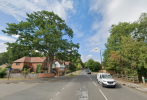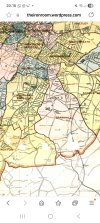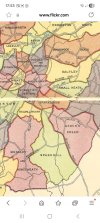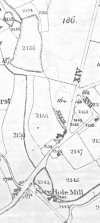-
Welcome to this forum . We are a worldwide group with a common interest in Birmingham and its history. While here, please follow a few simple rules. We ask that you respect other members, thank those who have helped you and please keep your contributions on-topic with the thread.
We do hope you enjoy your visit. BHF Admin Team
You are using an out of date browser. It may not display this or other websites correctly.
You should upgrade or use an alternative browser.
You should upgrade or use an alternative browser.
Tolkien's Birmingham
- Thread starter smallheathexplorer
- Start date
Radiorails
master brummie
Did I hear somewhere that the decendants are not very happy witht he way hes being portrayed?

Tolkien estate disavows forthcoming film starring Nicholas Hoult
Lord of the Rings author’s estate declares it did not ‘approve of, authorise or participate in the making of’ new biopic
The Guardian reported that the family made a point that they were not so much objecting, but refusing to be associated with it, as commercial films of this type tend to overdramatise (ie invent) parts, and the family did not wish it to seem that they were going along with any of these inventions
Absolutely Mike. I think it’s only right that a family should be able to distance itself from these things - inevitably not everything will be based on fact in the name of of entertainment. Viv.
Pedrocut
Master Barmmie
the mention of twin towers could have possabily be looking across lonbridge from the lickeys with one tower being the hospital at hollymoor and the other being lonbridge pumping station origonly by the longbridge island but gone now
The Hollymoor Grade II Listed Building doesn’t yet seem to feature in the Forum. The Google Earth 3D view and the listing description below...

Hollymoor Hospital Water Tower.

WATER TOWER AT HOLLYMOOR HOSPITAL, Non Civil Parish - 1234427 | Historic England
List entry 1234427. Grade II Listed Building: Water Tower At Hollymoor Hospital. May include summary, reasons for designation and history.
Pedrocut
Master Barmmie

6 Historic Places That Inspired Tolkien’s Lord of the Rings
Catch a glimpse of Middle-Earth at these listed historical sites in England.
On a visit to Iceland many years ago. We were told by the guide that Tolkien's nanny was Icelantic and she told him many of the folk-law stories that are passed down verbally through the families during the long winter nights. Those he eventually wrote down and that is were he got his stories.
She was his children's au pair I believe. Tolkien had read the sagas in English translation since childhood and had learned Old Norse, so he was able to greet her in Icelandic. https://guidetoiceland.is/connect-with-locals/sigrunthormar/tolkiens-icelandic-au-pairOn a visit to Iceland many years ago. We were told by the guide that Tolkien's nanny was Icelantic and she told him many of the folk-law stories that are passed down verbally through the families during the long winter nights. Those he eventually wrote down and that is were he got his stories.
superdad3
master brummie
What an interesting person Tolkien was. Just been reading up again about his childhood in Birmingham. Well I say Birmingham but of course neither Sarehole, Kings Heath or Rednal were in Birmingham at the time.
Another few quibbles I have. Lots of sources talk about Sarehole as a village or hamlet. Was it ever? Sarehole Mill was orginally in open fields with little sign of development in Tolkien's day and was the only use of "Sarehole" that I can trace. Incidentally I think that where Tolkien lived [Gracewell Cottages] was Wake Green.
But my real quibble is the constant reference to Sarehole [Mill] and where Tolkien lived as located in Hall Green. They were not. Again, they were both in Wake Green although in modern terms they are described as in Moseley. I've always thought of the River Cole as the boundary as does BCC. See Street View from the River Cole bridge looking towards the mill.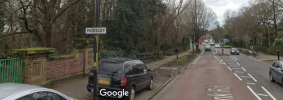
Another few quibbles I have. Lots of sources talk about Sarehole as a village or hamlet. Was it ever? Sarehole Mill was orginally in open fields with little sign of development in Tolkien's day and was the only use of "Sarehole" that I can trace. Incidentally I think that where Tolkien lived [Gracewell Cottages] was Wake Green.
But my real quibble is the constant reference to Sarehole [Mill] and where Tolkien lived as located in Hall Green. They were not. Again, they were both in Wake Green although in modern terms they are described as in Moseley. I've always thought of the River Cole as the boundary as does BCC. See Street View from the River Cole bridge looking towards the mill.

This photo taken 1905 of Gracewell Cottages shows a very different Wake Green Road to today. Source https://www.birmingham.gov.uk/directory_record/158748/gracewell_cottages
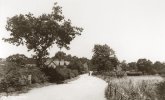

This mentions the details you gave Dave. Afraid the quality of the clipping isn't great.A Blue Plaque was erected in 1997 to say that Tolkien had stayed at the Plough and Harrow Hotel, Hagley Road in June 1916. Also found a report that this was the night before he travelled to France to fight in the WW1 battlefields. Tolkien was 24 at the time. Is there still a Tolkien restaurant at the Plough and Harrow? Dave.
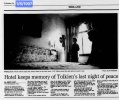
Source : British Newspaper Archive
A Sparks
master brummie
Tolkien Society suggests him for new banknotes..
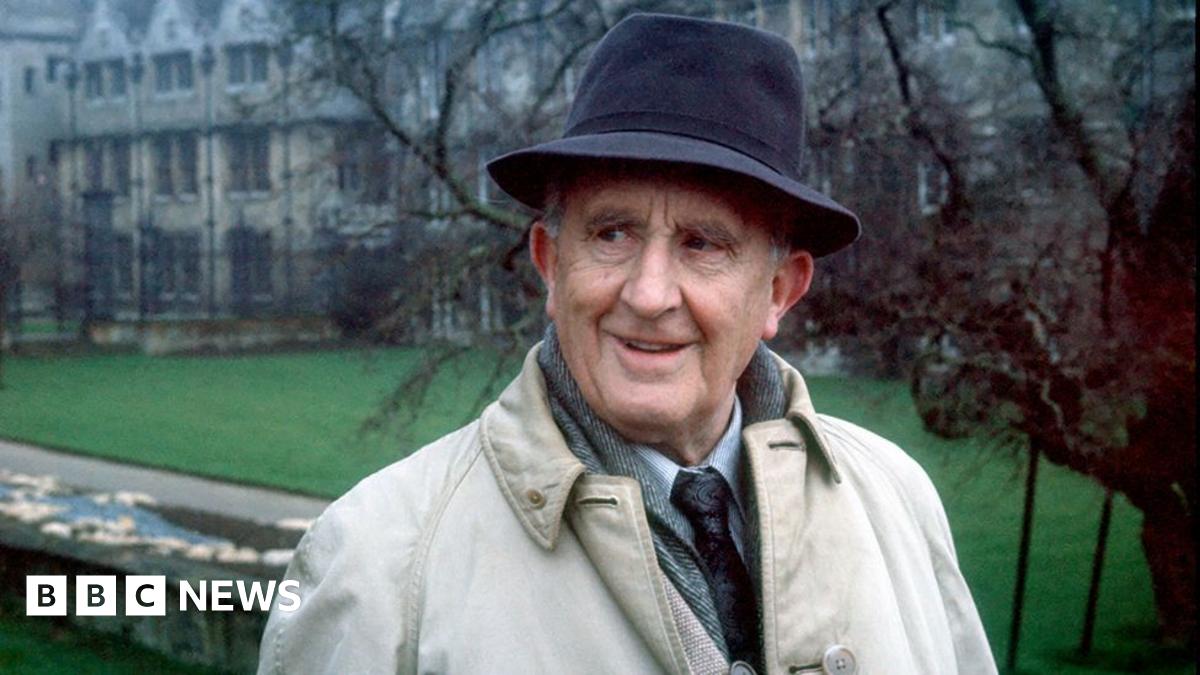
 www.bbc.co.uk
www.bbc.co.uk

JRR Tolkien society suggests author features on new banknotes
The Tolkien Society writes to the Bank of England to suggest the "unique opportunity" to honour him.
There are references to land at Sarehole going back at least to the 1760s and 1770s, so it was understood as a place that far back. Sarehole Farm was occupied by Matthew Boultons Snr and Jnr around that time. Wake Green was in Yardley Parish, whereas Moseley was part of Kings Norton Parish, so to call Wake Green Moseley Wake Green, which happened at least as far back as the early 19th century, is to import an 'alien' name into part of Yardley. In fact Sarehole near Swanshurst would have been just as good, although there is a reference to Sarehole near Hall Green in 1761!This photo taken 1905 of Gracewell Cottages shows a very different Wake Green Road to today. Source https://www.birmingham.gov.uk/directory_record/158748/gracewell_cottages
View attachment 184618
I made no statement about the location of Gracewell Cottages. Parish boundaries shift. I think when Tolkien lived there it was Sarehole, a hamlet? But if anyone wants to find the modern location then Wake Green Road will find the house. See #103 above which shows the Moseley boundary and @superdad3 comments.There are references to land at Sarehole going back at least to the 1760s and 1770s, so it was understood as a place that far back. Sarehole Farm was occupied by Matthew Boultons Snr and Jnr around that time. Wake Green was in Yardley Parish, whereas Moseley was part of Kings Norton Parish, so to call Wake Green Moseley Wake Green, which happened at least as far back as the early 19th century, is to import an 'alien' name into part of Yardley. In fact Sarehole near Swanshurst would have been just as good, although there is a reference to Sarehole near Hall Green in 1761!
When I mentioned Yardley Parish I could have said instead the Manor of Yardley, which stretched from Yardley Wood to Lea Hall and lasted until 1911. I wasn't thinking of later church parish boundaries at all. Gracewell Cottages were in Yardley when built, and were there until they became part of Birmingham in 1911. Incidentally, Tolkien himself referred to Sarehole as similar to other Warwickshire villages. Sarehole was of course in Worcestershire, Yardley's parent county.I made no statement about the location of Gracewell Cottages. Parish boundaries shift. I think when Tolkien lived there it was Sarehole, a hamlet? But if anyone wants to find the modern location then Wake Green Road will find the house. See #103 above which shows the Moseley boundary and @superdad3 comments.
In fact, when the area came into Birmingham it was in Sparkhill Ward, not Moseley and Kings Heath Ward: see mapWhen I mentioned Yardley Parish I could have said instead the Manor of Yardley, which stretched from Yardley Wood to Lea Hall and lasted until 1911. I wasn't thinking of later church parish boundaries at all. Gracewell Cottages were in Yardley when built, and were there until they became part of Birmingham in 1911. Incidentally, Tolkien himself referred to Sarehole as similar to other Warwickshire villages. Sarehole was of course in Worcestershire, Yardley's parent county.
Attachments
superdad3
master brummie
Boundaries and local administration are notoriously difficult to follow. By the start of the 19C the Parish had long replaced the manor as the main administrative unit. During the Victorian period local administration in Yardley and elsewhere became increasingly complex with various agencies set up, all independant of each other. [eg Poor Law Union, Highways Board, Civil Registration, Sanitary Authority etc etc] It wasn't until 1894 that Yardley Rural District Council was set up and took over many of these responsibilities.
Wake Green used to straddle the parish boundary of Yardley (Worcestershire at the time) and Kings Norton. Gracewell Cottages when built were in a very rural part of what was part of Wake Green.
As Bill Dargue said, "Although the district was considered part of Moseley by the 18th century and often referred to as Moseley Wake Green or Moseley in Yardley, most of it actually lay within sub-manor of Greet which lay in Yardley manor".
When Gracewell Cottages were built, apart from Sarehole Mill And Sarehole Farm there was little else in the area. There was never a hamlet let alone a village called Sarehole. Here's part of the 1903 OS Map.
Technically therefore Tolkien lived in Yardley but in an area popularly long associated with Moseley.
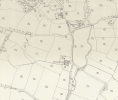
Wake Green used to straddle the parish boundary of Yardley (Worcestershire at the time) and Kings Norton. Gracewell Cottages when built were in a very rural part of what was part of Wake Green.
As Bill Dargue said, "Although the district was considered part of Moseley by the 18th century and often referred to as Moseley Wake Green or Moseley in Yardley, most of it actually lay within sub-manor of Greet which lay in Yardley manor".
When Gracewell Cottages were built, apart from Sarehole Mill And Sarehole Farm there was little else in the area. There was never a hamlet let alone a village called Sarehole. Here's part of the 1903 OS Map.
Technically therefore Tolkien lived in Yardley but in an area popularly long associated with Moseley.

How far away was the border of Yardley? Belle Walk, Billesley Lane and the golf course, Hollybank Road. Not that close. Even in 1933 the River Cole was not a boundary. That came later. So historically the later site of Gracewell Cottages, and Sarehole Mill etc. were unambiguously part of the administrative area of Swanshurst Quarter in Yardley from the 18th century until 1911, and still that shape in Sparkhill Ward in 1933, when the Cole ran down the centre of the Ward. See the attached map.Boundaries and local administration are notoriously difficult to follow. By the start of the 19C the Parish had long replaced the manor as the main administrative unit. During the Victorian period local administration in Yardley and elsewhere became increasingly complex with various agencies set up, all independant of each other. [eg Poor Law Union, Highways Board, Civil Registration, Sanitary Authority etc etc] It wasn't until 1894 that Yardley Rural District Council was set up and took over many of these responsibilities.
Wake Green used to straddle the parish boundary of Yardley (Worcestershire at the time) and Kings Norton. Gracewell Cottages when built were in a very rural part of what was part of Wake Green.
As Bill Dargue said, "Although the district was considered part of Moseley by the 18th century and often referred to as Moseley Wake Green or Moseley in Yardley, most of it actually lay within sub-manor of Greet which lay in Yardley manor".
When Gracewell Cottages were built, apart from Sarehole Mill And Sarehole Farm there was little else in the area. There was never a hamlet let alone a village called Sarehole. Here's part of the 1903 OS Map.
Technically therefore Tolkien lived in Yardley but in an area popularly long associated with Moseley.
View attachment 206591
On the Tithe Map is a small field number 2138, where Gracewell Cottages were later built. This is entirely surrounded by fields tenanted by the miller at Sarehole. A sliver of Moseley Wake Green, field 164, came down to the junction of Wake Green Road and Gracewell Road, but no further. So it is apparent that the Cottages were not strictly speaking part of Wake Green, in reality being part of Sarehole, whether it was a hamlet or not. The map evidence is clear. Sarehole was also larger than supposed in these posts: Little Sarehole Farm was at Four Arches bridge, and Sarehole Farm has also been called Hall or House. Beyond Little Sarehole was Sarehole Common. So one could actually say that Wake Green Road from Four Arches to just past Gracewell Cottages is just a later name for where Sarehole was. The road there is then the road to Wake Green, not of Wake Green. I have never heard of the prefabs being in Wake Green, for example. This Sarehole remained rural until after 1930. Tolkien cared about a modest rural life and didn't like suburbanisation. The creeping middle-class development that was Moseley Wake Green, with its concerns of gentility and status is anathema in this context, so to belittle and dismiss Sarehole and what it meant is not a good argument to make.
The attached enclosure map shows that only the very small Wake Green bordered Kings Norton Parish, but that Moseley Wake Green, a much larger area, was entirely within Yardley Parish.
I suppose the irony here is that Sarehole Mill is now officially in Hall Green North Ward. After forty years of caring for and promoting the river and its environs, the people of Hall Green surely deserved this. Furthermore, in 1807 the Sarehole estate included land in Hall Green where Petersfield Road is, and where both schools on the Stratford Road are, also land south of Green Road east of the river, and two fields north of School Road on the east side of Stratford Road. The claim that Hall Green has nothing to do with Sarehole is simply not true. This estate was almost entirely intact a century later when the Taylor Estate was sold in 1913, and the sandpit on Wake Green Road was part of one of the plots, showing again that this was Sarehole and not Wake Green.
Attachments
Last edited:
As a matter of interest, the 1928 will of the eminent solicitor A.H.Foster, saviour of Sarehole, contains in clause 6 the following statement:How far away was the border of Yardley? Belle Walk, Billesley Lane and the golf course, Hollybank Road. Not that close. Even in 1933 the River Cole was not a boundary. That came later. So historically the later site of Gracewell Cottages, and Sarehole Mill etc. were unambiguously part of the administrative area of Swanshurst Quarter in Yardley from the 18th century until 1911, and still that shape in Sparkhill Ward in 1933, when the Cole ran down the centre of the Ward. See the attached map.
On the Tithe Map is a small field number 2138, where Gracewell Cottages were later built. This is entirely surrounded by fields tenanted by the miller at Sarehole. A sliver of Moseley Wake Green, field 164, came down to the junction of Wake Green Road and Gracewell Road, but no further. So it is apparent that the Cottages were not strictly speaking part of Wake Green, in reality being part of Sarehole, whether it was a hamlet or not. The map evidence is clear. Sarehole was also larger than supposed in these posts: Little Sarehole Farm was at Four Arches bridge, and Sarehole Farm has also been called Hall or House. Beyond Little Sarehole was Sarehole Common. So one could actually say that Wake Green Road from Four Arches to just past Gracewell Cottages is just a later name for where Sarehole was. The road there is then the road to Wake Green, not of Wake Green. I have never heard of the prefabs being in Wake Green, for example. This Sarehole remained rural until after 1930. Tolkien cared about a modest rural life and didn't like suburbanisation. The creeping middle-class development that was Moseley Wake Green, with its concerns of gentility and status is anathema in this context, so to belittle and dismiss Sarehole and what it meant is not a good argument to make.
The attached enclosure map shows that only the very small Wake Green bordered Kings Norton Parish, but that Moseley Wake Green, a much larger area, was entirely within Yardley Parish.
I suppose the irony here is that Sarehole Mill is now officially in Hall Green North Ward. After forty years of caring for and promoting the river and its environs, the people of Hall Green surely deserved this. Furthermore, in 1807 the Sarehole estate included land in Hall Green where Petersfield Road is, and where both schools on the Stratford Road are, also land south of Green Road east of the river, and two fields north of School Road on the east side of Stratford Road. The claim that Hall Green has nothing to do with Sarehole is simply not true. This estate was almost entirely intact a century later when the Taylor Estate was sold in 1913, and the sandpit on Wake Green Road was part of one of the plots, showing again that this was Sarehole and not Wake Green.
.....to my said nephew George Arthur Charles Pettitt my freehold house and premises known as 'Millmead' situate at Sarehole, Hall Green, Birmingham.....
Millmead is number 273 Wake Green Road, opposite Gracewell Cottages. We may perhaps conclude that a solicitor would be careful in his choice of words in his own will.
At his death he was living at The Moorlands. Previously he had lived at The Chalet. A local with full knowledge of the area, who chose to be buried at the Church of the Ascension, Hall Green.
Last edited:



